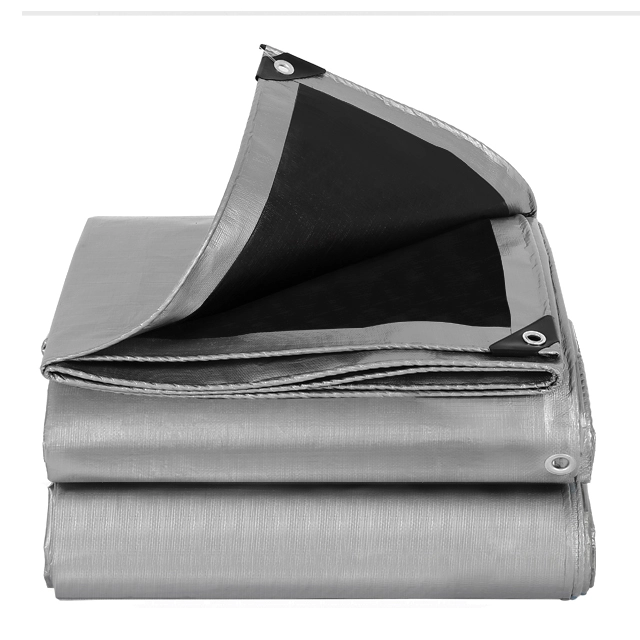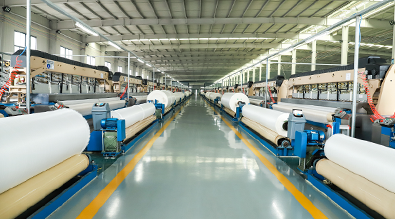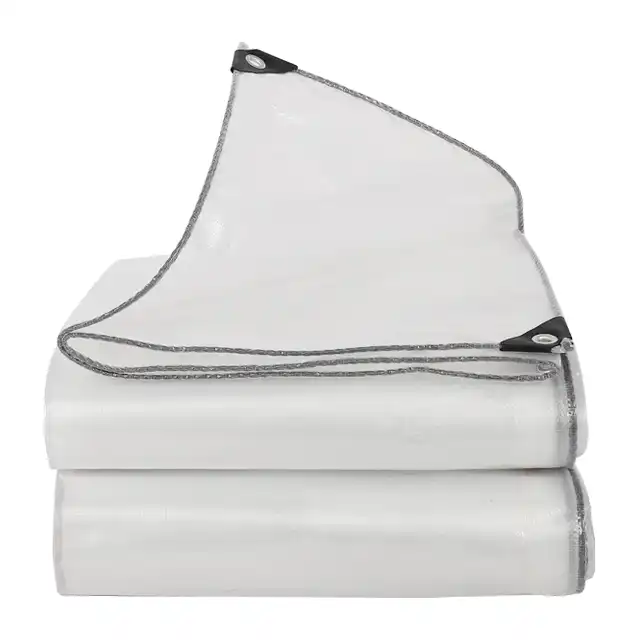When keeping up your polyethylene or canvas tarps, choosing the right cleaning method becomes vital for protecting their defensive qualities and extending their life expectancy. Secure cleansers for tarps incorporate mild dish cleansers, specialized texture cleaners, and delicate clothing cleansers without dye or texture conditioners. These cleaning specialists viably evacuate soil, buildup, and stains without compromising the waterproof coating or UV treatment that makes quality tarps so profitable for outdoor protection.
Understanding Tarps: Types and Materials

Understanding the construction and materials of different tarp types helps you select appropriate cleaning methods and detergents. The marketplace offers various options, each designed for specific applications and environmental conditions. Canvas tarps feature natural cotton fibers treated with paraffin or other waterproofing agents. These breathable covers work well for protecting equipment that requires air circulation, such as machinery storage or temporary shelters. Their porous nature allows moisture to escape while maintaining weather resistance. Poly tarps, manufactured from high-density polyethylene (HDPE) woven fabric with low-density polyethylene (LDPE) coating, provide superior waterproofing and UV protection. Our SENDOW brand polyethylene covers utilize tightly woven fibers ranging from 65gsm to 280gsm, offering exceptional durability across various thickness levels from 7 to 12 mil. The laminated construction on both sides creates a barrier that resists tears, punctures, and environmental damage. These PE tarpaulins incorporate high-strength yarns with UV treatment ranging from 1% to 7%, protecting against harmful solar radiation and preventing color fading. The mesh count varies between 10x10 and 14x14, providing an optimal balance between strength and flexibility. Available in custom colors and sizes up to 5.1 meters wide, these covers serve applications from truck covering to aquaculture protection.
How to Properly Clean Tarps?
Legitimate cleaning procedures protect the judgment of your defensive covers, whereas expelling accumulated dirt, flotsam and jetsam, and natural development. The cleaning approach shifts depending on the fabric composition and defilement level. Secure cleanser choice shapes the establishment of successful tarp support. Mellow dish cleansers like First Light or Bliss work perfectly since they cut through oil and grime without unforgiving chemicals. Maintain a strategic distance from cleansers containing fade, texture conditioners, or proteins, as these added substances can break down waterproof coatings and UV medications. Manual cleaning gives the gentlest approach for important covers. Blend one tablespoon of gentle cleanser with a gallon of warm water. Utilizing a soft-bristled brush or cloth, work the arrangement into recolored ranges with circular movements. Wash completely with clean water, guaranteeing all cleanser buildup is expelled to avoid drawing in extra soil. Machine washing becomes attainable for smaller tarps that fit comfortably in your washer. Utilize cold water on a delicate cycle with negligible cleanser. Maintain a strategic distance from the turn cycle if conceivable, as the centrifugal constraint can stretch creases and grommets. Discuss drying anticipates warm harm that might compromise waterproof properties. Weight washing offers productive cleaning for expansive, intensely ruined covers. Keep up a remove of at slightest three feet and utilize a wide splash design to avoid puncturing the fabric. Work methodically from best to foot, permitting gravity to carry absent released flotsam and jetsam.
Maintaining Tarps for Longevity
Regular maintenance practices significantly extend the service life of your protective covers and tarps while maintaining their performance characteristics. Proactive care prevents minor issues from developing into costly replacement needs. Inspection routines should occur monthly during active use periods. Check for small tears, loose grommets, or areas where the coating appears worn. Early detection allows for simple repairs before damage spreads across larger sections. Storage solutions protect your investment during off-seasons or between projects. Clean covers thoroughly before storage, ensuring they are completely dry to prevent mildew growth. Fold loosely rather than creating sharp creases that can become stress points. Store in a cool, dry location away from direct sunlight and sharp objects. DIY repair techniques handle common damage patterns effectively. Small punctures can be patched using compatible tape or patch kits designed for your tarp material and tarps. Torn grommets require replacement hardware that matches the original specifications. Professional repair services become necessary for extensive damage or specialized applications requiring certified waterproofing.
Comparing Tarps: Finding the Best Fit
Selecting between diverse tarp categories depends on your particular application prerequisites, natural conditions, and budget considerations. Understanding the execution characteristics makes a difference in optimizing your buy choice. Heavy-duty alternatives like our 180gsm to 280gsm polyethylene covers withstand demanding applications, including development destinations, rural security, and mechanical capacity. These vigorous covers include improved tear resistance and expanded UV treatment, defending their higher fetched throughout the prevalent lifespan. Light-duty options extending from 65gsm to 100gsm give cost-effective arrangements for transitory scope needs. Whereas less solid than heavy-duty forms, they offer amazing value for short-term ventures or applications with negligible stretch introduction. Canvas versus poly comparisons uncover unmistakable focal points for each fabric type. Canvas breathability benefits applications requiring dampness control, whereas polyethylene's total waterproofing exceeds expectations in climate security scenarios. Our PE coverings combine the best properties through progressed fabricating methods, conveying solid execution over differing conditions. Execution testing illustrates that appropriately kept up polyethylene covers reliably outlive canvas choices in open air situations. The manufactured fabric stands up to decay, mold, and creepy crawly harm while keeping up adaptability in temperature extremes from cold conditions to tropical warm.
Where to Purchase Quality Tarps?
Sourcing reliable protective covers requires identifying suppliers with proven manufacturing capabilities and quality control systems for tarps. The procurement process affects both immediate costs and long-term performance outcomes. Online purchasing provides access to specialized manufacturers offering custom solutions unavailable through local retailers. Direct factory relationships eliminate middleman markups while ensuring product authenticity and warranty coverage. Wholesale and bulk purchasing strategies reduce per-unit costs significantly for large projects or institutional buyers. Volume orders of 100 or more pieces typically qualify for graduated pricing discounts, with savings increasing substantially at higher quantities. Quality indicators include ISO certifications, third-party testing reports, and established customer relationships with major organizations. Our partnerships with UNHCR, IOM, ICRC, and UNICEF demonstrate the reliability standards required for critical humanitarian applications.
About Our Company
Linyi Shengde Plastic Co., Ltd. has spearheaded polyethylene covering fabricating since 2003, building comprehensive mastery through two decades of ceaseless development and quality advancement. Our enrolled capital of RMB 60 million bolsters progressive generation offices covering 60,000 square meters. Our fabricating capabilities incorporate 30+ high-tech extruding machines, 400+ Korea-imported programmed water-jet looms, and specialized gear for creating ultra-wide textures up to 5 meters without joints. Seven-generation lines prepared with mechanical heat-sealing machines empower month-to-month yield capacity surpassing 4,000 metric tons. Quality administration frameworks earned ISO 9001:2015 certification, with thorough testing conventions guaranteeing steady execution over all product lines. Our inquiry and advancement group persistently progresses fabric science applications, as of late creating improved fire-resistant and ultra-waterproof details. Universal extension started in 2009, setting up dispersion systems over 30+ nations, including Spain, Canada, Mexico, Brazil, India, Bangladesh, Saudi Arabia, Ethiopia, and Kenya. This worldwide nearness gives bits of knowledge into different application requirements and natural challenges.
Frequently Asked Questions
Q1: Can I use regular laundry detergent to clean my polyethylene tarp?
A: Yes, but choose detergents without bleach, fabric softeners, or enzymes. These additives can damage waterproof coatings and UV treatments. Mild formulations work best for preserving material integrity while achieving effective cleaning results.
Q2: How often should I clean my outdoor covers?
A: Clean your covers every 2-3 months during active use, or whenever visible contamination appears. More frequent cleaning may be necessary in dusty, industrial, or marine environments where accelerated soiling occurs.
Q3: Is pressure washing safe for all tarp materials?
A: Pressure washing works well for heavy-duty polyethylene covers when proper technique is used. Maintain adequate distance and use wide spray patterns. Canvas tarps require gentler cleaning methods to avoid damaging natural fibers and treatments.
Partner with Shengde for Superior Tarp Solutions
Quality polyethylene covers require proper maintenance to deliver optimal performance throughout their service life. Shengde's commitment to manufacturing excellence ensures you receive products engineered for durability and longevity. Our comprehensive product range accommodates diverse applications from construction and agriculture to humanitarian relief operations. Custom manufacturing capabilities allow precise specification matching for unique project requirements, while standardized options provide immediate availability for common needs. As a leading tarps manufacturer, we understand the critical importance of reliable protective coverings in your operations. Our 1000+ skilled workers maintain production standards that have earned trust from international organizations and commercial customers worldwide. Experience the Shengde advantage through our proven track record of delivering quality products, competitive pricing, and responsive customer service. Whether you need standard covers or specialized solutions, our team provides the expertise and manufacturing capacity to support your success. Ready to upgrade your protective covering solutions? Contact us at info@shengdetarp.com to discuss your requirements and discover how our advanced manufacturing capabilities can benefit your projects.
Conclusion
These systematic cleaning procedures ensure thorough soil removal while maintaining the protective characteristics essential for continued agricultural use of tarps. Proper technique execution prevents damage to waterproof coatings on tarps and extends overall service life. Temperature considerations affect cleaning effectiveness, with warm water typically providing better soil dissolution than cold water for tarps. However, excessive heat can damage certain material coatings on tarps, making moderate temperatures optimal for most cleaning applications.
References
1. Smith, Robert J. "Industrial Fabric Maintenance and Care Guidelines." Textile Protection Institute, 2023.
2. Anderson, Maria K. "Polyethylene Tarpaulin Performance Analysis in Extreme Weather Conditions." Journal of Protective Materials, Vol. 45, 2022.
3. Wilson, David L. "Comparative Study of Canvas vs. Synthetic Tarp Materials." Industrial Covering Research Quarterly, 2023.
4. Thompson, Sarah M. "Chemical Compatibility of Cleaning Agents with Waterproof Coatings." Materials Science Review, Issue 18, 2022.
5. Garcia, Carlos R. "Best Practices for Commercial Tarp Maintenance and Storage." Professional Equipment Care Manual, 2023.
6. Johnson, Patricia E. "UV Treatment Effectiveness in Polyethylene Fabric Applications." Environmental Protection Materials Journal, 2022.




